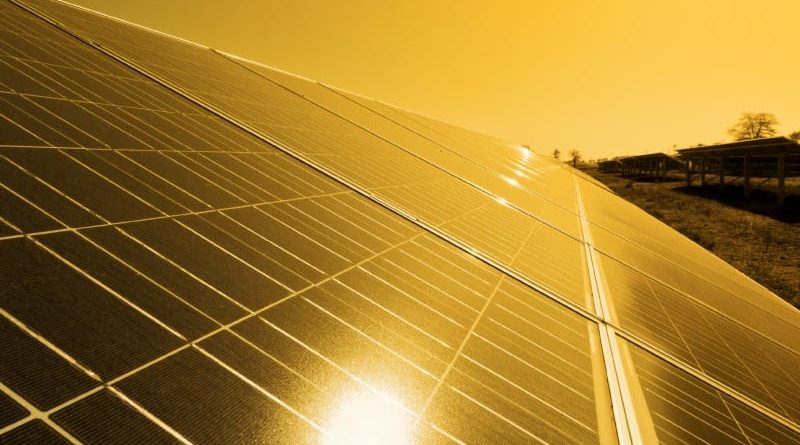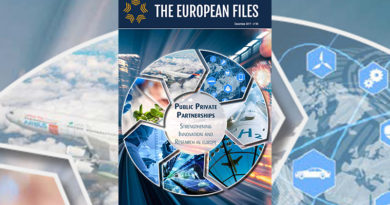
Solar power and sector coupling
Under the European Green Deal, the European Commission aims for Europe to become the first climate neutral continent by 2050, pioneering the fight against climate change globally and entering the race for industrial leadership in clean energy technologies. Climate neutrality will require slashing emissions through the decarbonisation of the economy and industries; a decarbonised energy system not only requires the massive deployment of renewables, but also strong sectoral integration to enable the growth of renewable beyond electricity, towards the entire energy system.
Sectoral integration refers to connecting different energy production and end-use sectors, with the goal of optimising the synergies that come from an increasingly electrified system. In a report from SolarPower Europe and LUT University published in April 2020, high-level modelling proved that it is entirely possible to achieve a 100% renewables scenario in which Europe meets the climate-neutrality target before 2050. The report also found that a 100% renewable energy system is the most cost-efficient way to become climate neutral in Europe by 2050, with levelised costs of energy 5-6% lower than in a less ambitious scenario.
Importantly, the report illustrated that sectoral integration is a crucial ingredient to achieve these goals, with efforts needed to increase electrification and battery storage, and to decarbonise the heating and transport sectors.
Increased electrification and battery storage are the principal means of reaching the necessary level of decarbonisation.
An electrification rate of around 85% will result in significant efficiency gains for the European energy system – with the power, heating, and transport sectors all contributing to the climate neutrality target. Further, this can pave the way for renewable hydrogen to contribute to the full decarbonisation of the heat and transport sectors by 2030 as the second largest energy carrier – this is essential for hard-to-abate sectors such as marine and aviation, as well as heavy industry and chemicals.
The study further shows that a decarbonised energy system in Europe will be primarily a solar story. Solar PV and wind represent the two main pillars of the energy transition, sup- plying over 90% of power demand in the long term. Due to its unique versality – capable of being installed in any size for distributed and centralised applications – and combined with its strong cost-competitiveness, solar will generate over 60% of the electricity in both 100% renewable scenarios modelled for 2040 (high ambition) and 2050 (medium ambition). At this penetration level, solar would employ over 4 million people in Europe by 2050 – providing high-skilled jobs, particularly in regions most affected by the energy transition.
A result of renewables-based electrification is enhanced sectoral integration. Direct and indirect renewable electricity usage in the power, heat, and transport sectors will increase through the transition. While the direct and indirect electricity needs are likely to be the highest in transport, up to 10,000 TWh in our most ambitious scenario; the possible maximum is up to 7,000 TWh in the power sector and up to 3,000 TWh in the heat sector.
Indeed, the transport sector is the most difficult to decarbonise and will become as of 2020, Europe’s prime source of CO2 emissions. While electric vehicles will drive the way for the full decarbonisation of road transport, renewable electricity-based hydrogen emerges as an essential energy source for the complete transition of the transport sector, providing a sustainable solution for heavy transport modes such as aviation and shipping. Here, electrolysers are a key technology, which not only have a vital role in the production of synthetic fuels, but also in enhancing the flexibility and integration of the energy system.
In 2050, installed capacities of electrolysers will be well distributed across Europe, with the higher capacities operating in Spain and Turkey.
Overall, in our most ambitious scenario, we project 2,825 GW of electrolysers installed in 2050. A detailed cost comparison has shown that synthetic fuel production in southern Europe in 2030 will not be more expensive than in North Africa, and that obviously there is a gain in energy security since the energy will be produced in Europe – this not only enhances sectoral integration, but further advances Europe’s energy autonomy.
Sectoral integration is a key priority of the Commission, which is set to present a strategy on ‘smart sector integration for a future integrated European energy system’ in early July 2020. The strategy aims to maximise efficiency of an integrated system, focusing, for example, on increasing the roll-out of electric vehicles and heat pumps – both of which add to the level of electrification of their respective sectors. Also important is the development of a more circular economy, where energy efficiency is a guiding principal. For instance, the ‘waste’ heat from industries can be used to heat buildings, through a district heating network.
There are still many impediments to reaching this vision. In particular, there is the need to strengthen links across sectors, which today often operate in isolation of each other. Further, there is the need to develop a more decentralised and digitalised energy system, where solar energy and consumers can play a more active role. It will take a cross-sectoral dedicated commitment to achieve the ambition of the European Green Deal, but together and today more than ever, a climate-neutral Europe is possible.




